In dieser Rubrik stellen wir Ihnen regelmäßig wichtige Beiträge österreichischer NeurologInnen zum internationalen wissenschaftlichen Fortschritt vor.
Aufruf: Es würde uns freuen, wenn auch Sie Ihre Arbeit in dieser Rubrik teilen würden! Es reicht, den Pubmed-Link an Walter Struhal zu senden, alles weitere erfahren Sie per email.
September 2019

Markus Leitinger
Epidemiology of status epilepticus in adults: A population-based study on incidence, causes, and outcomes.
REF Link zur Originalpublikation
Autoren: Leitinger M, Trinka E, Giovannini G, Zimmermann G, Florea C, Rohracher A, Kalss G, Neuray C, Kreidenhuber R, Höfler J, Kuchukhidze G, Granbichler C, Dobesberger J, Novak HF, Pilz G, Meletti S, Siebert U
Zusammenfassung/Abstract:
OBJECTIVE:
In 2015, the International League Against Epilepsy (ILAE) proposed a new definition of status epilepticus (SE): 5 minutes of ongoing seizure activity to diagnose convulsive SE (CSE, ie, bilateral tonic-clonic SE) and 10 minutes for focal SE and absence SE, rather than the earlier criterion of 30 minutes. Based on semiology, several types of SE with prominent motor phenomena at any time (including CSE) were distinguished from those without (ie, nonconvulsive SE, NCSE). We present the first population-based incidence study applying the new 2015 ILAE definition and classification of SE and report the impact of the evolution of semiology and level of consciousness (LOC) on outcome.
METHODS:
We conducted a retrospective population-based incidence study of all adult patients with SE residing in the city of Salzburg between January 2011 and December 2015. Patients with hypoxic encephalopathy were excluded. SE was defined and classified according to the ILAE 2015.
RESULTS:
We identified 221 patients with a median age of 69 years (range 20-99 years). The age- and sex-adjusted incidence of a first episode of SE, NCSE, and SE with prominent motor phenomena (including CSE) was 36.1 (95% confidence interval [CI] 26.2-48.5), 12.1 (95% CI 6.8-20.0), and 24.0 (95% CI 16.0-34.5; including CSE 15.8 [95% CI 9.4-24.8]) per 100 000 adults per year, respectively. None of the patients whose SE ended with or consisted of only bilateral tonic-clonic activity died. In all other clinical presentations, case fatality was lower in awake patients (8.2%) compared with patients with impaired consciousness (33%).
SIGNIFICANCE:
This first population-based study using the ILAE 2015 definition and classification of SE found an increase of incidence of 10% compared to previous definitions. We also provide epidemiologic evidence that different patterns of status evolution and LOCs have strong prognostic implications.
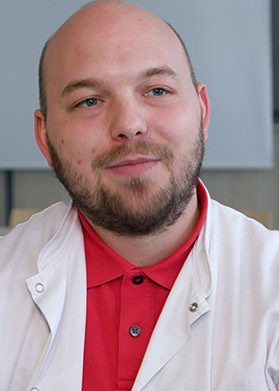
Aljoscha Thomschewski
Localization of the Epileptogenic Zone Using High Frequency Oscillations.
REF Link zur Originalpublikation
Autoren: Aljoscha Thomschewski, Ana-Sofía Hincapié, Birgit Frauscher
Zusammenfassung/Abstract:
For patients with drug-resistant focal epilepsy, surgery is the therapy of choice in order to achieve seizure freedom. Epilepsy surgery foremost requires the identification of the epileptogenic zone (EZ), defined as the brain area indispensable for seizure generation. The current gold standard for identification of the EZ is the seizure-onset zone (SOZ). The fact, however that surgical outcomes are unfavorable in 40–50% of well-selected patients, suggests that the SOZ is a suboptimal biomarker of the EZ, and that new biomarkers resulting in better postsurgical outcomes are needed. Research of recent years suggested that high-frequency oscillations (HFOs) are a promising biomarker of the EZ, with a potential to improve surgical success in patients with drug-resistant epilepsy without the need to record seizures. Nonetheless, in order to establish HFOs as a clinical biomarker, the following issues need to be addressed. First, evidence on HFOs as a clinically relevant biomarker stems predominantly from retrospective assessments with visual marking, leading to problems of reproducibility and reliability. Prospective assessments of the use of HFOs for surgery planning using automatic detection of HFOs are needed in order to determine their clinical value. Second, disentangling physiologic from pathologic HFOs is still an unsolved issue. Considering the appearance and the topographic location of presumed physiologic HFOs could be immanent for the interpretation of HFO findings in a clinical context. Third, recording HFOs non-invasively via scalp electroencephalography (EEG) and magnetoencephalography (MEG) is highly desirable, as it would provide us with the possibility to translate the use of HFOs to the scalp in a large number of patients. This article reviews the literature regarding these three issues. The first part of the article focuses on the clinical value of invasively recorded HFOs in localizing the EZ, the detection of HFOs, as well as their separation from physiologic HFOs. The second part of the article focuses on the current state of the literature regarding non-invasively recorded HFOs with emphasis on findings and technical considerations regarding their localization.
November 2018

Johannes Koren
Early Epileptiform Discharges and Clinical Signs Predict Nonconvulsive Status Epilepticus on Continuous EEG.
REF Link zur Originalpublikation
Autoren: Koren J, Herta J, Draschtak S, Pötzl G, Fürbass F, Hartmann M, Kluge T, Gruber A, Baumgartner C.
Zusammenfassung:
ABSTRACT
BACKGROUND: Critical care continuous electroencephalography (CCEEG) represents the gold standard for detection of nonconvulsive status epilepticus (NCSE) in neurological critical care patients. It is unclear which findings on short-term routine EEG and which clinical parameters predict NCSE during subsequent CCEEG reliably. The aim of the present study was to assess the prognostic significance of changes within the first 30 min of EEG as well as of clinical parameters for the occurrence of NCSE during subsequent CCEEG.
METHODS: Systematic analysis of the first 30 min and the remaining segments of prospective CCEEG recordings according to the ACNS Standardized Critical Care EEG Terminology and according to recently proposed NCSE criteria as well as review of clinical parameters of 85 consecutive neurological critical care patients. Logistic regression and binary classification tests were used to determine the most useful parameters within the first 30 min of EEG predicting subsequent NCSE.
RESULTS: The presence of early sporadic epileptiform discharges (SED) and early rhythmic or periodic EEG patterns of “ictal-interictal uncertainty” (RPPIIIU) (OR 15.51, 95% CI 2.83-84.84, p = 0.002) and clinical signs of NCS (OR 18.43, 95% CI 2.06-164.62, p = 0.009) predicted NCSE on subsequent CCEEG. Various combinations of early SED, early RPPIIIU, and clinical signs of NCS showed sensitivities of 79-100%, specificities of 49-89%, and negative predictive values of 95-100% regarding the incidence of subsequent NCSE (p < 0.001). CONCLUSIONS: Early SED and early RPPIIIU within the first 30 min of EEG as well as clinical signs of NCS predict the occurrence of NCSE during subsequent CCEEG with high sensitivity and high negative predictive value and may be useful to select patients who should undergo CCEEG.
September 2018

Martin Krenn
Mutations outside the N-terminal part of RBCK1 may cause polyglucosan body myopathy with immunological dysfunction: expanding the genotype-phenotype spectrum.
REF Link zur Originalpublikation
Autoren: Krenn M, Salzer E, Simonitsch-Klupp I, Rath J, Wagner M, Haack TB, Strom TM, Schänzer A, Kilimann MW, Schmidt RLJ, Schmetterer KG, Zimprich A, Boztug K, Hahn A, Zimprich F
Zusammenfassung:
ABSTRACT
A subset of patients with polyglucosan body myopathy was found to have underlying mutations in the RBCK1 gene. Affected patients may display diverse Symptoms ranging from skeletal muscular weakness, cardiomyopathy to chronic autoinflammation and immunodeficiency. It was suggested that the exact localization of the mutation within the gene might be responsible for the specific phenotype, with N-terminal mutations causing severe immunological dysfunction and mutations in the middle or C-terminal part leading to a myopathy phenotype.
We report the clinical, immunological and genetic findings of two unrelated individuals suffering from a childhood-onset RBCK1-asscociated disease caused by the same homozygous truncating mutation (NM_031229.2:c.896_899del,p.Glu299Valfs*46) in the middle part of the RBCK1 gene. Our patients suffered from a myopathy with cardiac involvement, but in contrast to previous reports on mutations in this part of the gene, also displayed signs of autoinflammation and
immunodeficiency.
Our report suggests that RBCK1 mutations at locations that were previously thought to lack immunological features may also present with
immunological dysfunction later in the disease course. This notably broadens the genotype-phenotype correlation of RBCK1-related polyglucosan body myopathy.
November 2017

Prim.PD Dr. T.v.Oertzen
Histopathological Findings in Brain Tissue Obtained during Epilepsy Surgery
REF Link zur Originalpublikation
Autoren: Ingmar Blumcke, M.D., Roberto Spreafico, M.D., Ph.D., Gerrit Haaker, M.D., Roland Coras, M.D., Katja Kobow, Ph.D., Christian G. Bien, M.D., Margarete Pfäfflin, M.Sc., Christian Elger, M.D., Guido Widman, M.D., Johannes Schramm, M.D., Albert Becker, M.D., Kees P. Braun, M.D., Frans Leijten, M.D., Johannes C. Baayen, M.D., Eleonora Aronica, M.D., Ph.D., Francine Chassoux, M.D., Hajo Hamer, M.D., Hermann Stefan, M.D., Karl Rössler, M.D., Maria Thom, M.D., Matthew C. Walker, M.D., Sanjay M. Sisodiya, F.R.C.P., John S. Duncan, M.D., Andrew W. McEvoy, M.D., Tom Pieper, M.D., Hans Holthausen, M.D., Manfred Kudernatsch, M.D., H. Joachim Meencke, M.D., Philippe Kahane, M.D., Ph.D., Andreas Schulze-Bonhage, M.D., Josef Zentner, M.D., Dieter H. Heiland, M.D., Horst Urbach, M.D., Bernhard J. Steinhoff, M.D., Thomas Bast, M.D., Laura Tassi, M.D., Giorgio Lo Russo, M.D., Cigdem Özkara, M.D., Buge Oz, M.D., Pavel Krsek, M.D., Silke Vogelgesang, M.D., Uwe Runge, M.D., Holger Lerche, M.D., Yvonne Weber, M.D., Mrinalini Honavar, M.D., José Pimentel, M.D., Ph.D., Alexis Arzimanoglou, M.D., Adriana Ulate-Campos, M.D., Soheyl Noachtar, M.D., Elisabeth Hartl, M.D., Olaf Schijns, M.D., Renzo Guerrini, M.D., Carmen Barba, M.D., Thomas S. Jacques, F.R.C.Path., Ph.D., J. Helen Cross, F.R.C.P.C.H., Ph.D., Martha Feucht, M.D., Angelika Mühlebner, M.D., Thomas Grunwald, M.D., Ph.D., Eugen Trinka, M.D., Peter A. Winkler, M.D., Antonio Gil-Nagel, M.D., Ph.D., Rafael Toledano Delgado, M.D., Thomas Mayer, M.D., Martin Lutz, Ph.D., Basilios Zountsas, M.D., Kyriakos Garganis, M.D., Felix Rosenow, M.D., Anke Hermsen, M.Sc., Tim J. von Oertzen, M.D., Thomas L. Diepgen, M.D., Ph.D., and Giuliano Avanzini, M.D., for the EEBB Consortium*
Zusammenfassung:
BACKGROUND
Detailed neuropathological information on the structural brain lesions underlying seizures is valuable for understanding drug-resistant focal epilepsy.
METHODS
We report the diagnoses made on the basis of resected brain specimens from 9523 patients who underwent epilepsy surgery for drug-resistant seizures in 36 centers from 12 European countries over 25 years. Histopathological diagnoses were determined through examination of the specimens in local hospitals (41%) or at the German Neuropathology Reference Center for Epilepsy Surgery (59%).
RESULTS
The onset of seizures occurred before 18 years of age in 75.9% of patients overall, and 72.5% of the patients underwent surgery as adults. The mean duration of epilepsy before surgical resection was 20.1 years among adults and 5.3 years among children. The temporal lobe was involved in 71.9% of operations. There were 36 histopathological diagnoses in seven major disease categories. The most common categories were hippocampal sclerosis, found in 36.4% of the patients (88.7% of cases were in adults), tumors (mainly ganglioglioma) in 23.6%, and malformations of cortical development in 19.8% (focal cortical dysplasia was the most common type, 52.7% of cases of which were in children). No histopathological diagnosis could be established for 7.7% of the patients.
CONCLUSIONS
In patients with drug-resistant focal epilepsy requiring surgery, hippocampal sclerosis was the most common histopathological diagnosis among adults, and focal cortical dysplasia was the most common diagnosis among children. Tumors were the second most common lesion in both groups. (Funded by the European Union and others.)
September 2017
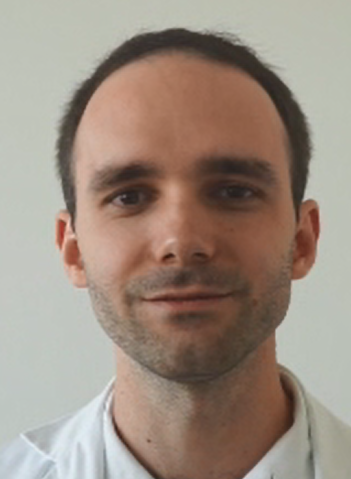
Christoph Waiß
CXCL-13 as a biomarker in the diagnostics of neuroborreliosis
Nervenarzt. 2017 Link zur Originalpublikation
Autoren: Waiß C.,Kindler W., Ströbele B., Aspöck C., Oberndorfer S.
Zusammenfassung:
ABSTRACT
BACKGROUND:
The chemokine CXCL-13 is a potential intrathecal biomarker for neuroborreliosis (NB). According to the literature the sensitivity of CXCL-13 in the diagnostics of NB varies between 88% and 100% and the specificity between 63% and 99.7%. The objective of this study was to analyze the sensitivity and specificity of CXCL-13 in the diagnosis of NB in an endemic area of Borrelia burgdorferi.
MATERIAL AND METHODS:
In a retrospective analysis of data from August 2014 to August 2016, 63 patients with clinically suspected NB were identified. The diagnosis of NB was based on the guidelines of the German Society of Neurology (DGN).
RESULTS:
In 10 patients a definitive diagnosis of NB could be established (CXCL-13 min. 254 pg/ml /max. >900 pg/ml). The criteria for a probable NB were fulfilled by 2 patients (CXCL-13 concentration 8 pg/ml and 69 pg/ml, respectively), 9 patients had a chronic inflammatory demyelinating disease (CXCL-13 min. 10 pg/ml/max. 649 pg/ml) and 42 patients had other neurological diagnoses. Out of these, elevated intrathecal CXCL-13 concentrations were detected in 8 patients (e. g. tuberculosis, syphilis and anti-RI antibody positive paraneoplastic syndrome).
CONCLUSION:
By increasing the CXCL-13 cut-off level from 20 pg/ml to 200 pg/ml, the diagnostic sensitivity for NB remains 100% and consequently the specificity increases from 69.8% to 92.4%. Moreover, a CXCL-13 cut-off set at 200 pg/ml would exclude NB in the 2 patients with probable NB. We conclude from these results that CXCL-13 represents a valuable biomarker for the exclusion of untreated NB, although with limited specificity.
Juli 2017
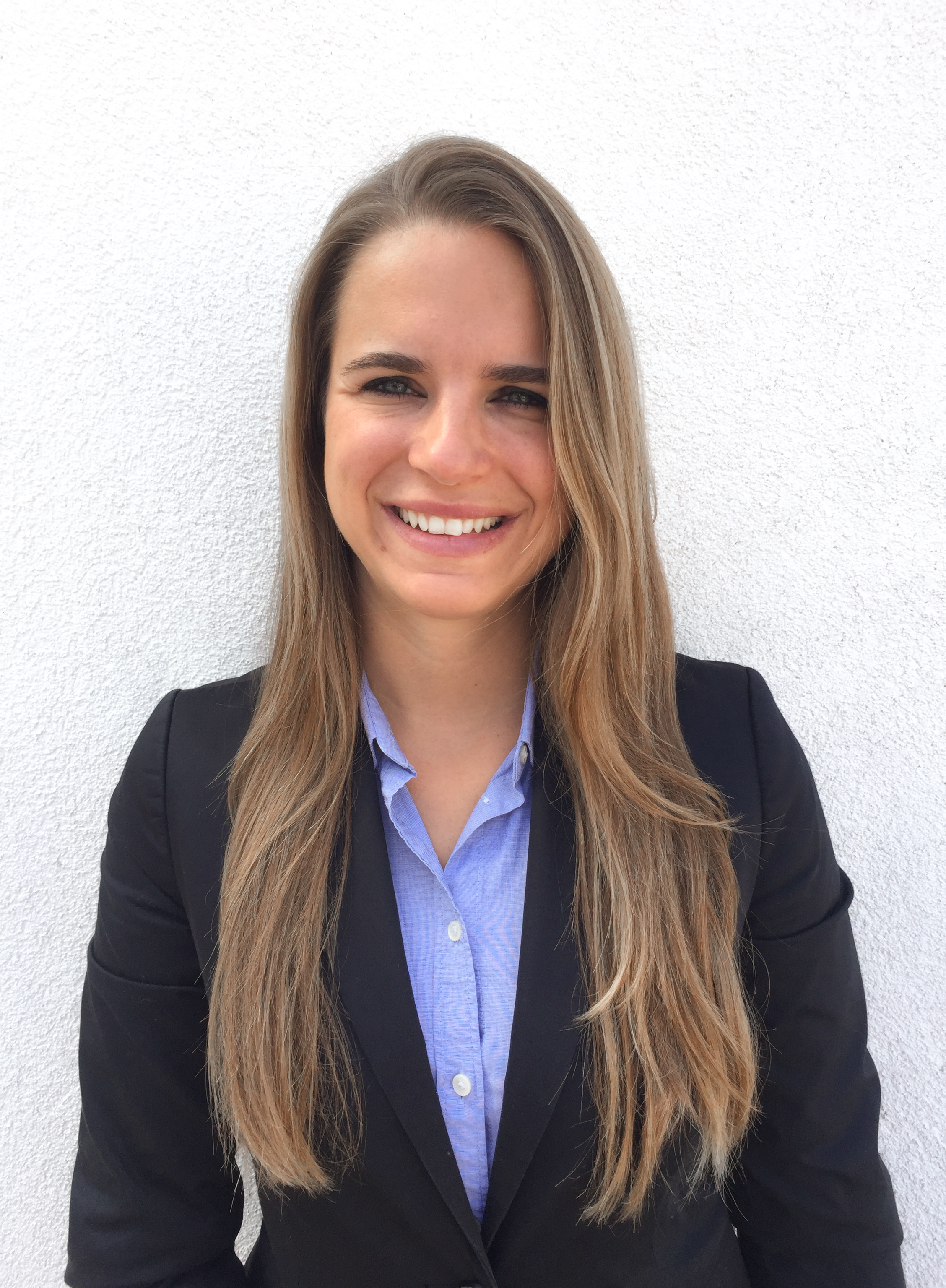
Anna Grisold
Chemotherapy-induced peripheral neuropathy: A current review.
Ann Neurol. 2017 Jun;81(6):772-781. Link zur Originalpublikation
Autoren: Staff NP, Grisold A, Grisold W, Windebank AJ.
Zusammenfassung:
Chemotherapy-induced peripheral neuropathy (CIPN) is a common dose-limiting side effect experienced by patients receiving treatment for cancer. Approximately 30
to 40% of patients treated with neurotoxic chemotherapy will develop CIPN, and there is considerable variability in its severity between patients.

copyright Wiley
survival rates continue to improve. In this review, we discuss the approach to peripheral neuropathy in patients with cancer and address the clinical phenotypes and pathomechanisms of specific neurotoxic chemotherapeutic agents.
Juni 2017
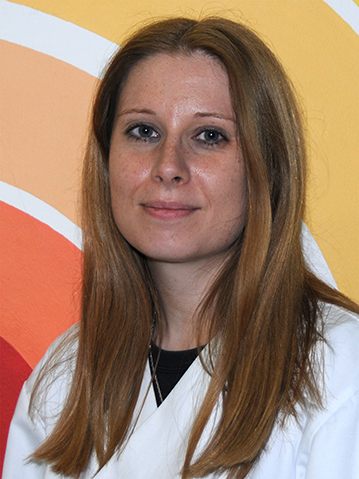
Sonja Hochmeister
Widespread cortical demyelination of both hemispheres can be induced by injection of pro-inflammatory cytokines via an implanted catheter in the cortex of MOG-immunized rats.
Exp Neurol. 2017 Aug;294:32-44. Link zur Originalpublikation
Autoren: Üçal M, Haindl MT, Adzemovic MZ, Strasser J, Theisl L, Zeitelhofer M, Kraitsy K, Ropele S, Schäfer U, Fazekas F, Hochmeister S.
Zusammenfassung:
Cortical demyelination is a common finding in patients with chronic multiple sclerosis (MS) and contributes to disease progression and overall disability. The exact pathomechanism that leads to cortical lesions is not clear.
Research is limited by the fact that standard animal models of multiple sclerosis do not commonly affect the cortex, or if they do in some variants, the cortical demyelination is rather sparse and already remyelinated within a fewdays. In an attempt to overcome these limitations we implanted a tissue-compatible catheter into the cortex of Dark Agouti rats. After 14 days the rats were immunized with 5 μg myelin oligodendrocyte glycoprotein (MOG) in incomplete Freund’s Adjuvant, which did not cause any clinical signs but animals developed a stable
anti-MOG antibody titer. Then the animals received an injection of proinflammatory cytokines through the catheter.
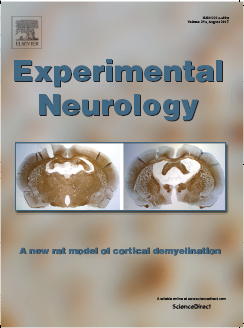
copyright elsevier
the contralateral hemisphere and reached its peak between days 9–15 after cytokine injection with a widespread demyelination of cortical and subcortical areas of both hemispheres. Clinically the animals showed only discrete signs of fatigue and recovered completely after day 15. Even on day 30 we stillwere able to detect demyelination in subpial and intracortical areas along with areas of partial and complete remyelination. Loss of cortical myelin was accompanied with marked microglia activation. A second injection of cytokines through the catheter on day 30 led to a second demyelination phase with the same symptoms, but again no detectable motor dysfunction.
Suffering of the animals appeared minor compared to standard Experimental Autoimmune Encephalomyelitis and therefore, even long-term observation and repeated demyelination phases seem ethically acceptable.
Mai 2017

Milan R. Vosko
J Thromb Thrombolysis. 2017 Apr;43(3):306-317.
J Thromb Thrombolysis. 2017 Apr;43(3):306-317. Link zur Originalpublikation
Autoren: Vosko MR, Bocksrucker C, Drwiła R, Dulíček P, Hauer T, Mutzenbach J, Schlimp CJ, Špinler D, Wolf T, Zugwitz D.
Zusammenfassung:
Non-vitamin K antagonist oral anticoagulants (NOACs) have a favorable benefit-risk profile compared with vitamin K antagonists. However, the lack of specific reversal agents has made the management of some patients receiving long-term treatment with NOACs problematic in emergency situations such as major bleeding events or urgent procedures. Idarucizumab, a fully humanized Fab antibody fragment that binds specifically and with high affinity to dabigatran, was recently approved for use in adult patients treated with dabigatran when rapid reversal of its anticoagulant effect is required. Clinical experience with idarucizumab is currently limited. We report 11 real-life clinical cases in which idarucizumab was used after multidisciplinary consultation in a variety of emergency situations including severe postoperative bleeding, emergency high-bleeding-risk surgery (hip/spine surgery and neurosurgery), invasive diagnostic testing (lumbar puncture), intracranial bleeding (pre-pontine subarachnoid hemorrhage and lobar intracerebral hemorrhage) and thrombolysis with recombinant tissue plasminogen activator for acute ischemic stroke. This case series illustrates the role of idarucizumab in improving patient safety in rare emergency situations requiring rapid reversal of the anticoagulant effect of dabigatran, while highlighting the importance of information and education about the availability and appropriate use of this recently approved specific reversal agent.
April 2017

Markus Leitinger
Diagnostic accuracy of the Salzburg EEG criteria for non-convulsive status epilepticus: a retrospective study
Lancet Neurol. 2016 Sep;15(10):1054-62. Link zur Originalpublikation
Autoren: Leitinger M, Trinka E, Gardella E, Rohracher A, Kalss G, Qerama E, Höfler J, Hess A, Zimmermann G, Kuchukhidze G, Dobesberger J, Langthaler PB, Beniczky S.
Zusammenfassung:
BACKGROUND: Several EEG criteria have been proposed for diagnosis of non-convulsive status epilepticus (NCSE), but none have been clinically validated. We aimed to assess the diagnostic accuracy of the EEG criteria proposed by a panel of experts at the fourth London-Innsbruck Colloquium on Status Epilepticus in Salzburg, 2013 (henceforth called the Salzburg criteria).
METHODS: We did a retrospective, diagnostic accuracy study using EEG recordings from patients admitted for neurological symptoms or signs to three centres in two countries (Danish Epilepsy Centre, Dianalund, Denmark; Aarhus University Hospital, Aarhus, Denmark; and Paracelsus Medical University, Salzburg, Austria). Participants were included from the Danish centres if they were aged 4 months or older, and from the Austrian centre if aged 18 years or older. Participants were sorted into two groups: consecutive patients under clinical suspicion of having NCSE (the clinical validation group) or consecutive patients with abnormal EEG findings but no clinical suspicion of NCSE (the control group). Two raters blinded to all other patient data retrospectively analysed the EEG recordings and, using the Salzburg criteria, categorised patients as in NCSE or not in NCSE. By comparing with a reference standard inferred from all clinical and para-clinical data, therapeutic response, and the final outcome, we calculated sensitivity, specificity, overall diagnostic accuracy, positive and negative predictive values, and inter-rater agreement for the Salzburg criteria. The reference standard was inferred by two raters who were blinded to the scorings of the Salzburg criteria.
FINDINGS: We retrospectively reviewed EEG data from 220 patients. EEGs in the clinical validation group were recorded in 120 patients between Jan 1, and Feb 28, 2014 (Austria), and Aug 1, 2014, and Jan 31, 2015 (Denmark). EEGs in the control group were recorded in 100 patients between Jan 13 and Jan 22, 2014 (Austria) and Jan 12 and Jan 26, 2015 (Denmark). According to the reference standard, 43 (36%) of the 120 patients in the validation group had NCSE. In the validation cohort sensitivity was 97·7% (95% CI 87·9-99·6) and specificity was 89·6% (80·8-94·6); overall accuracy was 92·5% (88·3-97·5). Positive predictive value was 84·0% (95% CI 74·1-91·5) and negative predictive value was 98·6% (94·4-100). Three people in the control group (n=100) fulfilled the Salzburg criteria and were therefore false positives (specificity 97·0%, 95% CI 91·5-99·0; sensitivity not calculable). Inter-rater agreement was high for both the Salzburg criteria (k=0·87) and for the reference standard (k=0·95). Therapeutic changes occurred significantly more often in the group of patients fulfilling Salzburg criteria (42 [84%] of 50 patients) than in those who did not (11 [16%] of 70;
p<0·0001).
INTERPRETATION: The Salzburg criteria for diagnosis of NCSE have high diagnostic accuracy and excellent inter-rater agreement, making them suitable for
implementation in clinical practice.
März 2017

Walter Pirker
Gait disorders in adults and the elderly: A clinical guide.
Wien Klin Wochenschr. 2017 Feb;129(3-4):81-95. Link zur Originalpublikation
Autoren: Pirker W, Katzenschlager R
Zusammenfassung:
Human gait depends on a complex interplay of major parts of the nervous, musculoskeletal and cardiorespiratory systems. The individual gait pattern is influenced by age, personality, mood and sociocultural factors. The preferred walking speed in older adults is a sensitive marker of general health and survival. Safe walking requires intact cognition and executive control. Gait disorders lead to a loss of personal freedom, falls and injuries and result in a marked reduction in the quality of life. Acute onset of a gait disorder may indicate a cerebrovascular or other acute lesion in the nervous system but also systemic diseases or adverse effects of medication, in particular polypharmacy including sedatives. The prevalence of gait disorders increases from 10 % in people aged 60-69 years to more than 60 % in community dwelling subjects aged over 80 years. Sensory ataxia due to polyneuropathy, parkinsonism and frontal gait disorders due to subcortical vascular encephalopathy or disorders associated with dementia are among the most common neurological causes. Hip and knee osteoarthritis are common non-neurological causes of gait disorders. With advancing age the proportion of patients with multiple causes or combinations of neurological and non-neurological gait disorders increases. Thorough clinical observation of gait, taking a focused patient history and physical, neurological and orthopedic examinations are basic steps in the categorization of gaitdisorders and serve as a guide for ancillary investigations and therapeutic interventions. This clinically oriented review provides an overview on the phenotypic spectrum, work-up and treatment of gait disorders.
Februar 2017

Peter Sommer
Prehospital and intra-hospital time delays in posterior circulation stroke: results from the Austrian Stroke Unit Registry.
J Neurol. 2017 Jan;264(1):131-138. Link zur Originalpublikation
Autoren: Sommer P, Seyfang L, Posekany A, Ferrari J, Lang W, Fertl E, Serles W, Töll T, Kiechl S, Greisenegger S
Zusammenfassung:
Therapeutic effect of recombinant tissue-plasminogen activator (rt-PA) is time dependent. There is limited evidence whether localization of stroke within the posterior circulation (PCS) is associated with a treatment delay. We aimed to analyze within a nationwide multicenter cohort whether duration of pre- and intra-hospital patient management differs between patients with PCS and anterior circulation strokes (ACS). We studied onset-to-door-times (ODT) and door-to-needle-times (DNT) of all patients with acute ischemic stroke (IS) enrolled in the Austrian Stroke Unit Registry according to infarct localization. Classification into PCS and ACS was based on clinical presentation applying the criteria used in the Oxfordshire Community Stroke Project. Relationships between ODT, respectively, DNT and explanatory variables were modeled by multivariate linear regression. Between 2003 and 2015, 71010 patients with IS were enrolled, 11,924 with PCS and 59,086 with ACS. Overall, the ODT was significantly longer in PCS: median (IQR): 170 (25th, 75th‰: 79,420) min versus 110 (60,240); p < 0.001; this finding held true in multivariable analysis. In 10535 rt-PA-treated patients (1022 PCS/9832 ACS), ODT and DNT were significantly longer among those with PCS: ODT: median: 80 min (55,120) versus 72 (50,110), p < 0.001; DNT: 57 (35.90) versus 45 (30.67), p < 0.001. In the multivariate model, PCS was significantly associated with delay in the DNT. In conclusion, in this large nationwide cohort, patient management was significantly slower in PCS as compared to ACS. Increasing awareness about these delays and further elaboration of the underlying causes may translate into higher proportions of patients with PCS receiving rt-PA.